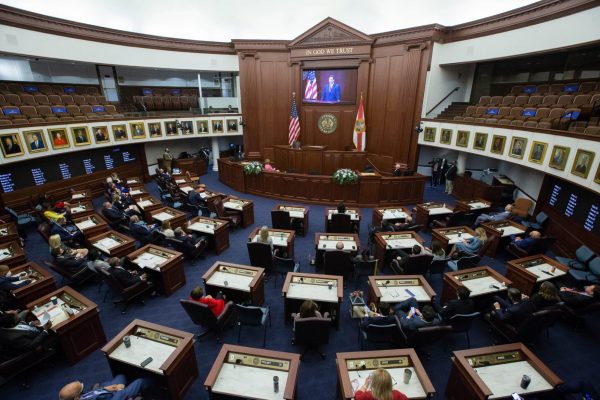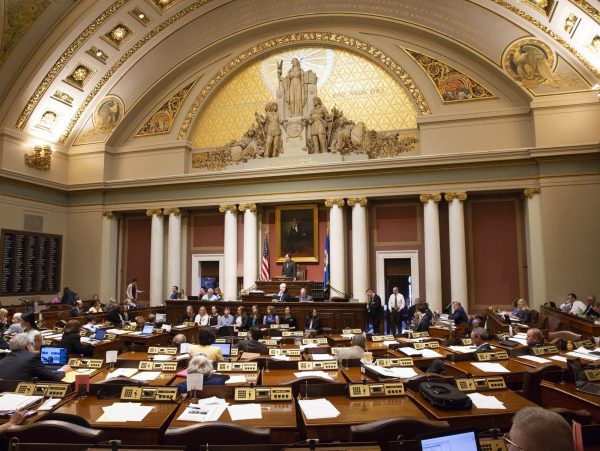A 50/50 split

Photo provided by: Brooke Holland
As a result of the 50/50 tie, the Democratic party will have control over the Presidency, the House for the next two years, and an upperhand in the Senate as there is no one majority leader.
February 18, 2021
On Wednesday, Jan. 6, 2021, lawmakers from the Senate and House met in a joint session to finalize the long awaited ceremonial last step of the presidential election process. As states were read in alphabetical order, members from each political party were given the opportunity to challenge the votes from any state. After an insurrection outside the capital happened whilst the meeting was in progress, Congress members were forced to evacuate, pushing the session later into the night and resulting in the announcement of Joe Biden’s win at approximately 3 a.m. the following morning. On that same afternoon, the Associated Press announced that the vote for the final seat for Senate had resulted in Democratic Georgia nominee Jon Ossof’s favor, leaving the Senate tied 50/50 between Democrats and Republicans.
Republicans went into this election holding 53 seats with hopes to keep them, while Democrats held 47 seats and hoped to overturn three or more. As a result of the 50/50 tie, the Democratic party will have control over the Presidency, the House for the next two years, and an upperhand in the Senate as there is no one majority leader and with the Democratic Vice President, Kamala Harris’ ability of casting the deciding vote in the possibility of a tie.
“The two leadership positions will have to actually figure out a way to work together because there is actually no majority,” U.S. history teacher Angela Boothe said. “Now what happens if they vote and they end up with a 50/50 tie, is the Vice President casts the deciding vote, because she [Kamala Harris] will be the president of the Senate.”
The shift in party control and a tie between Democrats and Republicans will result in changes this presidential term. Mitch McConnell and Chuck Schumer, minority and majority leaders for the Senate, have already made plans to meet and compromise on precedents for how to govern the chamber equally.
“I think the stonewalling of cabinet appointments will no longer be an issue, and the majority of Biden’s planned policies will go through, but deeper than that I don’t expect much change,” junior Mia Comas said. “Because the party split is so close, senators could go either way on issues and the sheer number of conservative judges Trump appointed across the country creates the possibility of overturning new laws.”
Although the new Vice President, Kamala Harris, will not be allowed to vote in the Senate unless in the case of a tie as a constitutional-given power, there is still the chance for more rulings to go in favor of the Democratic party as the Democrats control the chamber.
“I’m a little worried since the Democrats control the executive and the House and since Kamala serves as a tiebreaker in the Senate, we could be seeing an agenda that ignores the Republicans in the U.S.” senior Veronica Vera said. “Underrepresentation in Congress is a threat to American policy as a whole.”
This infrequent outcome has only happened three times in the history of the United States, with the last time being in 2001. Considering the rarity of this result, questions of how the two sides will work towards the same goal of bettering the country continue to arise.
“Because we have two senators from each state, the chances of it actually being 50/50 are unusual,” Booth said. “I think that is in itself monumental. You don’t have that a lot, typically you have one party that is in a little more control. I think it shows how divided our country is, where we are pretty much split right down the middle.”














